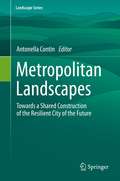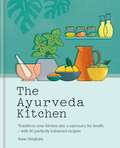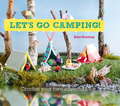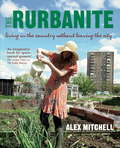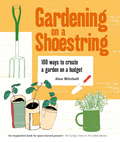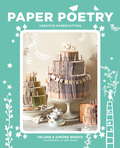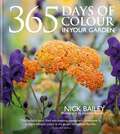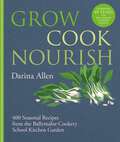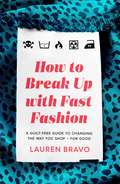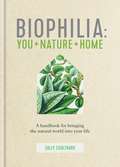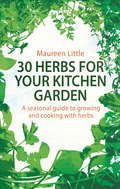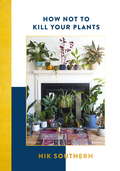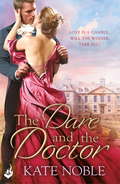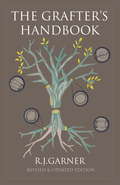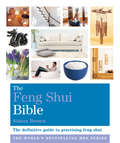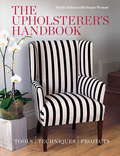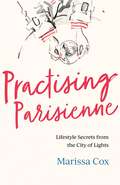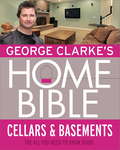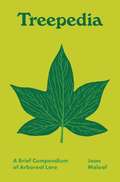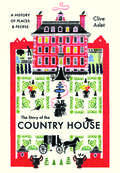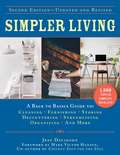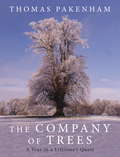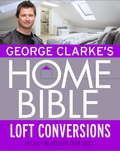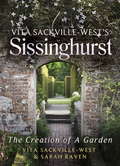- Table View
- List View
Metropolitan Landscapes: Towards a Shared Construction of the Resilient City of the Future (Landscape Series #28)
by Antonella ContinThis edited volume covers many aspects of the Metropolitan Landscapes. Solutions are needed to meet the demand of the citizens of a renewed metropolitan region landscape. It opens up discussions about possible toolkits for strategic actions based on understanding the territory from geographical, urban, architectural, economic, environmental, and public policy perspectives. This book intends to promote the Metropolitan dwelling quality, ensuring human well-being proposing a discussion on the resilient articulation of the interface space among the city's infrastructure, agriculture, and nature.This book results from the Symposium: Metropolitan Landscapes that MSLab of the Politecnico di Milano and ETSA (Sevilla) organized at the IALE 2019 Conference (Milan, July 2019) to manage radical territory transformation with a strategic vision. The widespread growth of urban areas indicates the importance of building resilient sustainable cities capable of minimizing climate-change impact production.The Symposium aimed to discuss the Urban Metabolism approach considering the combination of Landscapes set in a single Metropolitan Ecosystem. Accordingly, new design strategies of transformation, replacement or maintenance can compose Urban-Rural Linkage patterns and a decalage of different landscape contexts. Ecological interest in environmental sustainability, compatibility, and resilience is not tied exclusively to the balance between production and energy consumption. Thus, it is the integration over time and at several scales of the urban and rural landscapes and their inhabitants that nourish the Metropolitan Bioregion.Moreover, the Metropolitan Landscape Book's research hypothesis is the need for a Glossary, strengthening the basis of understanding Metropolitan Landscape's complexity.This book's topic is particularly relevant to Landscape Urbanism, Architecture, Urban disciplines Scholars, Students and Practitioners who want to be connected in a significant way with Metropolitan Discipline’s research field.
The Ayurveda Kitchen: Transform your kitchen into a sanctuary for health - with 80 perfectly balanced recipes
by Anne Heigham'Anne Heigham has brought the ancient, timeless wisdom of Ayurveda into these energizing recipes that nourish the doshas.Anne Heigham has brought the ancient, timeless wisdom of Ayurveda into these energizing recipes that nourish the doshas.' Vasant Lad, BAM&S, MASc, Ayurvedic Physician'Let food be your first medicine and the kitchen your first pharmacy.' Taittiriya UpanishadBy using the principles of Ayurveda, which is one of the fastest growing health practices, and a little vision, transform your kitchen into a space that nourishes your body, mind and soul.With this beautiful introduction to Ayurveda, learn how to use your kitchen as a natural pharmacy to improve your health and prevent imbalances with key Ayurvedic ingredients, 80 perfectly balanced vegetarian recipes and simple home remedies. Ayurveda aims to bring health back into balance, nourishing agni (metabolic fire) and prana (life force), while clearing ama (metabolic waste or 'sludge'). Just imagine fresh, vibrant herbs growing, seeds sprouting and pickles fermenting. Discover how to perform a kitchen sadhana at the beginning of each season, mix your own spice blends and balance recipes according to what you need and how you feel.Sections include:Introduction to AyurvedaAyurveda and seasonal eatingThe kitchen pharmacyRecipes from the Ayurveda kitchenRecipes include:Sweet potato and pea tortillaNourishing spiced pumpkin soupRefuelling rice and red lentil ballsCarrot and beetroot celebration cake
Let's Go Camping! From cabins to caravans, crochet your own camping Scenes: Crochet Your Own Adventure
by Kate BruningGo glamping without the threat of unpredictable weather and nasty creepy crawlies, and instead crochet your own adorable camping scene that will keep any child entertained for hours and celebrate all that is great about camping. Reminiscent of vintage camping memorabilia, you can create a nostalgic collection of crochet projects encompassing all aspects of outdoor life. With mix and match projects ranging from vintage caravans and ice cream trucks, to tents and teepees with all the camping paraphernalia of sleeping bags, backpacks and a log fire, as well as mountain and forest scenery you can create your own outdoor world. Or why not craft an alternative camping scene with a classic narrow boat, or a wooden lakeside cabin which can open up to reveal immaculately decorated insides. Instructions for playmats will give children a fantastic base for playing, allowing them to create games and stimulate their own imagination.
Rurbanite Handbook
by Alex MitchellIn cities around the world, we are redefining our sense of urban living. No longer satisfied with a grey, sterile metropolis, we want the best of both worlds - the energy and diversity of the city, but a connection with nature too. Filled with practical advice, projects and inspiring stories from bus stop landscapers, guerrilla gardeners, urban homesteaders and rooftop beekeepers from all over the world, The Rurbanite illustrates how our cityscapes are being transformed and shows you how enjoyable and simple it is to: * turn your back garden into an urban homestead * put a green roof on your garden shed * plant to encourage wildlife * guerrilla garden * keep bees, hens, quails, ducks * learn to identity the wild flowers growing out of cracks in the pavement * turn ex-industrial sites into vibrant community gardens
Gardening on a Shoestring: 100 Creative Ideas
by Alex Mitchell'The author of The Edible Balcony with 100 ingenious ideas for gardening on a budget.' The Bookseller'Alex Mitchell's new book Gardening on a Shoestring offers a delectable range of ways to create a garden on a budget.' The Independent In our increasingly busy and chaotic world, more and more of us are turning to gardening as a way to create a pleasant space to be in. However, as we continue to tighten our purse strings, the cost can make the pastime a source of further stress rather than one of pleasure. Alex Mitchell's Gardening on a Shoestring is full of inventive ways to achieve the garden you want on a budget, whether you are creating one from scratch or improving what you already have. Packed with money-saving tips, it combines classic gardening skills with simple, creative ideas. Sometimes it's about going back to the old ways of doing things, techniques in danger of being forgotten; other times it's about adapting to the new, saving money on equipment by making your own from inexpensive materials or knowing how to get bargains from nurseries and garden centres. So learn how to prune before you panic buy, grow food for peanuts, create pots for a pittance, propagate plants for nothing and make your own plant feed from weeds - all for next to nothing.
Vintage Home: Stylish Ideas And Over 50 Handmade Projects From Furniture To Decorating
by Sarah MooreRecycle, revamp and rejuvenate; with over 50 projects Sarah covers a whole spectrum of imaginative ideas for every room of the house, from blanket curtains to patchwork wallpaper, clever storage crates to fun mobiles for children, as well as unique ideas for dining, sleeping and bathing. Interweaved throughout the book are ideas for 'one thing four ways' to show how the same piece of furniture or a room can be updated with different look, plus handy advice on essential kit and techniques. Aimed at all skill levels, the projects can be completed in a few hours or over a weekend so you can revamp and refurbish your home in no time at all.
Paper Poetry: Creative papercutting
by Simone Bendix Helene BendixIn a world of screens and smartphones, there is something beautifully tangible and tactile about taking a piece of paper and cutting into it with a pair of scissors. With just a few folds and snips, an old shopping list can be transformed into a fluttering butterfly or a shooting star. Let your imagination run wild and bring fairy tales to life as you turn old books into hot air balloons and angels, or give new life to yesterday's newspaper as a garland of pretty hearts.Twins Helene and Simone have been papercutting for years, and between them have created a whole world of whimsical designs. In this delightful book, they share this magical skill with you - and the best part is, it's simple, creative and practically free. All you need is a pair of scissors and some scrap paper - no scalpel, no cutting mat, no complicated templates. With beautiful photography by Ben Nason, Helene and Simone's mindful approach embraces imperfection and opens up your creativity, helping you develop your own designs and ideas. Whether you want to cut a bouquet of flowers from old shopping receipts or transform discarded wrapping paper into Christmas decorations, this book is sure to delight and inspire.
365 Days of Colour In Your Garden
by Nick Bailey Note Bene LimitedA beautifully photographed guide for gardeners keen to attain the elusive colour-packed 'year-round garden'. Covering ideas on how to use, combine, design with and prolong colour, the book focuses on achievable ways of growing plants of every tone through 12 months of the year. It provides gardeners with an inspiring and surprising palette of plants to furnish their plots with sumptuous colour with detailed lists for Spring, Summer, Autumn and Winter. Bursting with practical advice on establishment and maintenance, the book also embraces plants for pots, cutting, difficult spaces and tiny gardens, and features long-season gardens from around the world.
Grow, Cook, Nourish: A Kitchen Garden Companion In 500 Recipes
by Darina AllenWinner - Gourmand World Cookbook Awards: Best World Gourmand Cookbook 2017Growing your own food is exciting but, when it comes to knowing how to make the most of your produce, it can be daunting. In Grow, Cook, Nourish, bestselling author Darina Allen draws on more than 30 years of experience gardening at Ballymaloe to take you through an extensive list of vegetables, herbs and fruits. Each entry includes explanations of different varieties, practical information on cultivation, growing and maintenance, plus instructions for the best ways to cook produce as well as preserve and utilise a glut. With more than 500 recipes, including dishes for every ingredient, Darina shows how to use your harvest to its full potential. Vegetables range from annual crops such as chicory, radishes and kohlrabi to perennials like asparagus and spinach. Fruits cover apples, currants and peaches as well as the more unusual and interesting myrtle berries, loquats and medlars. Plus a comprehensive list of herbs, edible flowers and foraged foods such as samphire, wild garlic and blackberries.
How To Break Up With Fast Fashion: A guilt-free guide to changing the way you shop – for good
by Lauren Bravo'A funny, achievable guide' Observer'Lauren Bravo is one of my favourite writers' Dolly Alderton'Bravo will inspire you to repair, recycle and give old items a new lease of life' StylistYou probably know the statistics: global clothing production has roughly doubled in just 15 years, and every year an estimated 300,000 tonnes of used clothing ends up in UK landfill.Fast fashion is the ultimate toxic relationship. It's bad news for the planet, our brains and our bank balances. We can't go on like this; our shopping habits need an overhaul.Journalist Lauren Bravo loves clothes more than anything, but she's called time on her affair with fast fashion in search of a slower, saner way of dressing. In this book, she'll help you do the same.How To Break Up With Fast Fashion will help you to change your mindset, fall back in love with your wardrobe and embrace more sustainable ways of shopping - from the clothes swap to the charity shop. Full of refreshing honesty and realistic advice, Lauren will inspire you to repair, recycle and give your unloved items a new lease of life without sacrificing your style.Because fashion belongs to everyone, but no outfit should cost us the earth.
Biophilia: You + Nature + Home
by Sally CoulthardIn this beautifully illustrated guide, best-selling author Sally Coulthard demonstrates how to transform your living and working spaces into places that put you in touch with nature.Eight inspiring chapters cover key elements for the 'biophilic home', including materials, views, colour and natural light. Each section explores the links between home, health and happiness, drawing on environmental research and neuroscience while making practical suggestions for bringing the natural world into your home.Bring nature indoors with flowers and plants, rediscover the innate pleasure of real fires and fresh air, and learn how to improve your mood and sleep patterns with dynamic light. Create a space filled with natural elements, patterns, nature's colours, fabrics and textures that lift your mood; find out why natural sounds and water are soothing; and learn how to make small changes that will inspire, invigorate and enrich your relationship with the natural world.'As best-selling author and designer, Sally Coulthard, reveals in this guide, creating a 'biophilic home' can have a huge impact on your wellbeing; improving your mood and encouraging healthier sleep patterns...Be it plants, materials, colour or light, it's enlightening to see how small changes can make a big difference, while deepening your respect and correlation to the natural world.' FORBES Magazine'How to embrace the natural world by transforming your interior spaces with specific materials, colours, views and sounds.' Gardens Illustrated'Humans are mammals, programmed over millennia to respond to the natural world. We may be able to live and work in man-made environments most of the time. But according to a new movement of "biophilic" designers and enthusiasts, we are not thriving...writer Sally Coulthard likens it to the practice of keeping animals in captivity, in surroundings ill-suited to their needs. "We live in a world that is fundamentally mismatched to our evolutionary adaptation - we don't see, hear and feel the things that we are programmed to respond to," she writes.' Financial Times
30 Herbs for Your Kitchen Garden: A seasonal guide to growing and cooking with herbs
by Maureen LittleHerbs that come straight to your kitchen table from your own garden bring unbeatable flavour and freshness to your cooking. This book is a seasonal guide to growing, cooking and using 30 of the most useful and popular culinary herbs, both delicate and robust. It includes 60 delicious recipes - each of which features one or more of these herbs - for soups, sauces, starters, main courses and puddings.Discover how to grow herbs in containers, and from cuttings and seeds, and how you can maintain your plants so that they will remain productive. You will also learn how to plan your herb garden, how to store herbs to preserve their flavour, and how to use herbs to flavour oils, vinegars, butters, sugars and jellies.
How Not To Kill Your Plants
by Nik SouthernHands up if you've killed a plant? Yep, me too. It's no secret that we've all become plant obsessed, but do we really understand how to look after them? I am not a Professor of Botany, but having run my florist and plant shop, Grace & Thorn, since 2011 I've learnt a few things along the way. HOW NOT TO KILL YOUR PLANTS is about taking the hocus-pocus out of plants and flowers and enabling you to understand a plant's needs in order to know where to place and how to style them, but most importantly how to keep them alive.I get asked every type of question you can imagine and I have written this book to answer them. Watering can down, it's time to go back to the roots.Keep it green.Nik x(AKA The Agony Plant)
The Dare and the Doctor: Winner Takes All 3 (Winner Takes All)
by Kate NobleFrom Kate Noble, part of the sensational writing team behind The Lizzie Bennet Diaries, comes the third novel in a dazzling and superbly witty historical romance series that's part Trading Places, part Pride and Prejudice. Perfect for fans of Julia Quinn, Stephanie Laurens and Tessa Dare.The best of friends might be the perfect match . . . What's the worst that can happen?Margaret Babcock had always been content with her quiet life in the country. But with her late mother's words 'What's the worst that could happen?' ringing in her ears, she longs to spread her wings. So when her long-time correspondent Dr Rhys Gray invites her to London, she eagerly accepts.Many happy hours are spent touring the wonders of the city - purely as friends, of course. But would friends miss each other so fiercely when they're apart? Or feel such a spark together? And matters are complicated even further when it transpires that Rhys may be promised to another. Will their 'friendship' survive?Be dazzled by Kate Noble's previous Winner Takes All books: The Game and the Governess and The Lie and the Lady.
The Grafter's Handbook: Revised & updated edition
by Steve Bradley R. J. GarnerR. J. Garner's The Grafter's Handbook is the classic reference book on plant propagation by grafting and has now been revised and updated for a new generation by respected horticulturalist, Steven Bradley. Everything the dedicated amateur, student and professional horticulturalist wants to know about grafting is here, clearly written in a concise and straightforward style. Chapters include Compatibility & Cambial Contact, Rootstocks & their Propagation, Tools & Accessories, Methods of Grafting and Grafting Established Trees.
The Feng Shui Bible: Godsfield Bibles (Godsfield Bibles)
by Simon G. BrownFrom understanding the basic principles of feng shui to mastering floor plans and using remedies to cure real-life problems, this definitive guide covers everything you need to know about this ancient art. It includes advice on moving house, tailoring feng shui to your personal requirements, choosing furnishings and deciding when to redecorate.The comprehensive directory shows you how you can apply feng shui to every aspect of your life - including your home, health, relationships, finances, career and spiritual life - to help you achieve your full potential, take control of your destiny and create a happier atmosphere at home.
The Upholsterer's Handbook
by Nicole Fulton Stuart WestonIn eye-capturing style The Upholsterer's Handbook offers everything you need and more, in order to prepare and inspire you to create beautifully upholstered furniture. The upholstered pieces range in skill level from simple seats to more complex items such as a button-back chair. Various styles of furniture are covered, from classic and elegant to other more styled and designer pieces.The Upholsterer's Handbook opens with sections on sourcing furniture, tools and materials, and choosing fabrics - including finishes and trimmings, which are often the key to the success of a piece. With special photography throughout, basic techniques are illustrated step-by-step, from stripping back to top stuffing to making cushions. 18 stunning projects are featured with varying skill levels, covering such diverse items as a G-plan chair, a sofa, a '70s flower-shaped stool, dining chairs, and headboards. Throughout Nicole Fulton demonstrates techniques using linen, satin, velvet, leather, cowhide, and other fabrics that give the furniture a unique contemporary look.
Practising Parisienne: Lifestyle Secrets from the City of Lights
by Marissa Cox'Even if you don't find yourself booking a one-way Eurostar ticket to the capital like Marissa, this book might just be the key to finally nailing that elusive Parisian je ne sais quoi.'Penny Goldstone, Fashion Editor, Marie Claire'A delightful, down-to-earth guide . . . complete with insider fashion tips, beauty tricks and dating advice from Marissa's own personal experience, plus interviews with many modern iterations of the ever-elusive Parisienne herself.' Monica de La Villardière, journalist and co-founder of the Fashion No Filter podcastTo be Parisian is to have a certain attitude and outlook on life. In Practicing Parisienne, British journalist and blogger Marissa Cox decodes this seemingly nebulous je ne sais quoi, explaining what she has learned since moving to France eight years ago, and how and why the reader can and should adopt a more Parisian lifestyle. She reveals how she learnt to live her best life in this iconic city, what it means to be Parisian and in turn inspire you to make positive changes in your own lives, however big or small. Covering everything from style, fashion, beauty and wellbeing to chic interiors and food and wine, as well as advice about dating and friendship, each section also contains interviews with well-known Parisians and Francophiles who inspire us to live better. Because, as we know, Paris is ALWAYS a good idea.'Practising Parisienne is a celebration of the City of Lights and an ode to the pleasures in life. Marissa Cox effortlessly mixes practical tips, personal stories and inspiring conversations in this charming guide to living well the Parisian way.'Miranda York, author of At the Table and The Food Almanac 'With appreciation, honesty, a deep understanding and access to leading figures, Practising Parisienne reads like a who's who and what's what when it comes to everything Parisian.'Hannah Almassi, Editor in Chief, Who What Wear UK
George Clarke's Home Bible: Cellars and Basements
by George ClarkeThe ROOM BY ROOM series is a set of short essential guides to transform your house into your ideal home. Each one is full of top tips and golden rules from award-winning architect and TV home-improvement guru George Clarke. From designing layouts, budgeting and lighting advice, through to storage solutions, tricks of the trade, finishes, materials and a fully comprehensive resources guide, these guides will fully equip you with all the information you need to improve the space you live in.For novices and experts alike, this is the one-stop guide to getting the best out of your cellar and basement.
Treepedia: A Brief Compendium of Arboreal Lore (Pedia Books)
by Joan MaloofA captivating A–Z treasury for the tree hugger in all of usTreepedia is an entertaining and fact-filled illustrated compendium of tree lore. Featuring nearly 100 entries—on topics ranging from tree ecology and conservation to the role of trees in religion, literature, art, and movies—this enticing collection is a celebration of all things arboreal.In this charming book, Joan Maloof explains the difference between a cedar and a cypress, and reveals where to find the most remarkable trees on the planet. She tells the story behind the venerable Bodhi Tree, and describes peculiar species like baobabs and Fitzroya. Maloof profiles legendary conservationists such as Julia "Butterfly" Hill, John Muir, Wangari Maathai, and Ken Wu. She discusses reforestation, proforestation, emerald ash borers, the ents from The Lord of the Rings, culturally modified trees, the ill-fated and controversial Redwood Summer, and much more. The book's portable size makes it the perfect travel companion no matter where your love of the forest may lead you.With enchanting illustrations by Maren Westfall, Treepedia is a fun and informative book that is guaranteed to inspire anyone who has ever enjoyed a walk in the woods.Features a real cloth cover with an elaborate foil-stamped designUses 100 percent recycled, uncoated, wood-free paper
The Story of the Country House: A History of Places and People
by Clive AsletThe fascinating story of the evolution of the country house in Britain, from its Roman precursors to the presentThe Story of the Country House is an authoritative and vivid account of the British country house, exploring how they have evolved with the changing political and economic landscape. Clive Aslet reveals the captivating stories behind individual houses, their architects, and occupants, and paints a vivid picture of the wider context in which the country house in Britain flourished and subsequently fell into decline before enjoying a renaissance in the twenty-first century. The genesis, style, and purpose of architectural masterpieces such as Hardwick Hall, Hatfield House, and Chatsworth are explored, alongside the numerous country houses lost to war and economic decline. We also meet a cavalcade of characters, owners with all their dynastic obsessions and diverse sources of wealth, and architects such as Inigo Jones, Sir John Vanbrugh, Robert Adam, Sir John Soane and A.W.N. Pugin, who dazzled or in some cases outraged their contemporaries. The Story of the Country House takes a fresh look at this enduringly popular building type, exploring why it continues to hold such fascination for us today.
Simpler Living, Second Edition—Revised and Updated: A Back to Basics Guide to Cleaning, Furnishing, Storing, Decluttering, Streamlining, Organizing, and More (Back to Basics Guides)
by Jeff Davidson1,500 Ways to Declutter, Organize, Streamline, and Reclaim Your Space and Your Time! Life moves too quickly these days, as technology, work, and personal commitments make it almost impossible to relax and enjoy life. Finding yourself stressed over the clutter in your kitchen or the mass of paper in front of your computer? Relax. This book will help. Filled with tips on how to uncomplicate your daily routine, eliminate stress at home and work, and more, this book will help you free up your time and your space so you can once again enjoy doing the things you love. Author Jeff Davidson has compiled more than 1,500 ways that you can simplify your life. Divided into sections for easy reference, this book will show you ways you can eliminate stress in your home, your personal life, and in your professional life. You will learn the six questions you should ask yourself before buying something new, the most efficient way to clean your pots and pans, the pay-ahead technique to get yourself out of debt, ways to make your commute more comfortable, and advice on hassle-free vacation planning for you and your family. This book is the guide you&’ve been looking for to lead the peaceful, productive life you&’ve always wanted.
The Company of Trees: A Year in a Lifetime's Quest
by Thomas Pakenham'The master. Puts all other modern tree-writers in the shade' John Lewis-Stempel, author of MeadowlandThomas Pakenham is an indefatigable champion of trees. In The Company of Trees he recounts his personal quest to establish a large arboretum on the family estate, Tullynally in Ireland; his forays to other tree-filled parks and plantations; his often hazardous seed-hunting expeditions; and his efforts to preserve magnificent old trees and historic woodlands.Whether writing about the terrible storms breaking the backs of hundred-year-old trees or a fire in the peat bog on Tullynally which threatens to spread to the main commercial spruce-woods, his fear of climate change and disease, or the sturdy young saplings giving him hope for the future, his book is never less than enthralling.
George Clarke's Home Bible: Bedrooms and Loft Conversions
by George ClarkeThe ROOM BY ROOM series is a set of short essential guides to transform your house into your ideal home. Each one is full of top tips and golden rules from award-winning architect and TV home-improvement guru George Clarke. From designing layouts, budgeting and lighting advice, through to storage solutions, tricks of the trade, finishes, materials and a fully comprehensive resources guide, these guides will fully equip you with all the information you need to improve the space you live in.For novices and experts alike, this is the one-stop guide to getting the best out of your loft conversion.
Vita Sackville-West's Sissinghurst: The Creation of a Garden
by Vita Sackville-West Sarah RavenFrom 1946 to 1957, Vita Sackville-West, the poet, bestselling author of All Passion Spent and maker of Sissinghurst, wrote a weekly column in the Observer describing her life at Sissinghurst, showing her to be one of the most visionary horticulturalists of the twentieth-century.With wonderful additions by Sarah Raven, Vita Sackville-West's Sissinghurst draws on this extraordinary archive, revealing Vita's most loved flowers, as well as offering practical advice for gardeners. Often funny and completely accessibly written with colour and originality, it also describes details of the trials and tribulations of crafting a place of beauty and elegance.Sissinghurst has gone on to become one of the most visited and inspirational gardens in the world and this marvellous book, illustrated with drawings and original photographs throughout, shows us how it was created and how gardeners everywhere can use some of the ideas from both Sarah Raven and Vita Sackville-West.
